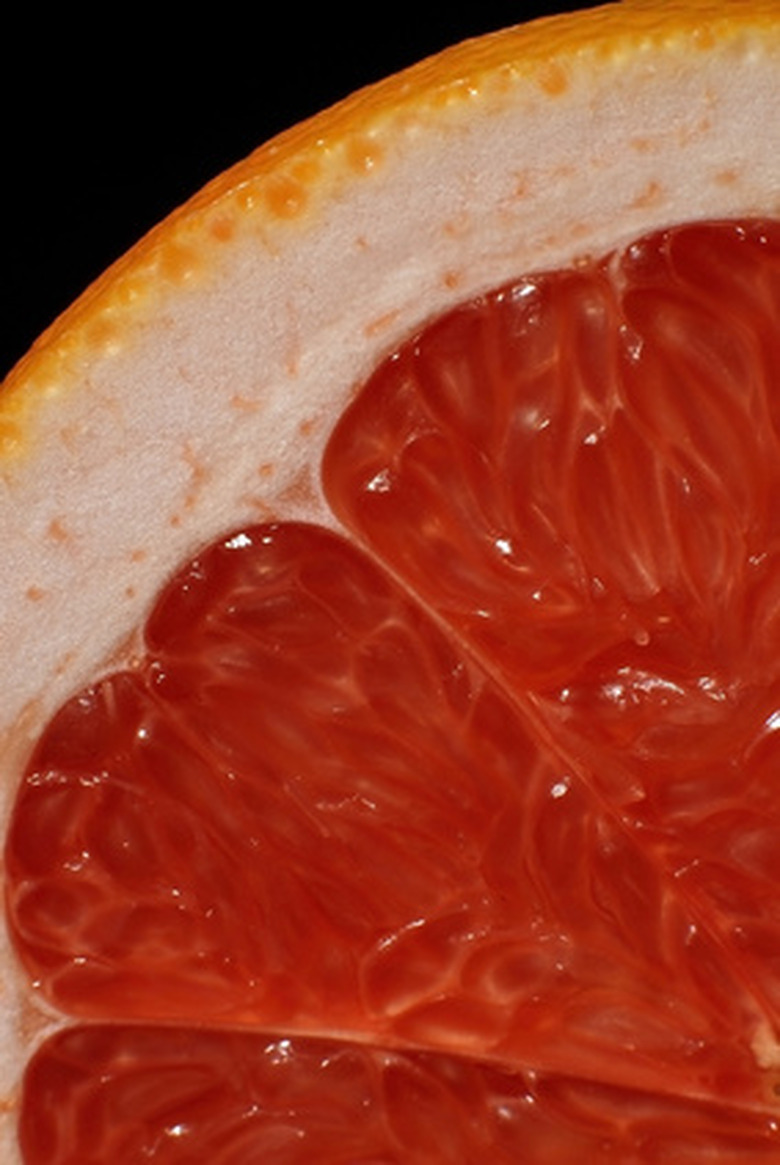Ants On Grapefruit Trees
Grapefruit trees in the home orchard provide a pleasing aesthetic impact and delicious fruit crops that are in danger of pest infestations by different varieties of ants. Contrary to typical belief, ants do not simply show up on your grapefruit trees because they are hungry but because another pest is already wreaking havoc. Become familiar with this pest relationship and provide attentive care to avoid problems in your citrus garden.
Care
Providing appropriate care results in vigorous grapefruit trees with an ability to ward off pests that stressed or weakened trees cannot accomplish. Grow grapefruit trees in areas that offer full sunlight for the best development of fruit and healthy growth, according to the AgriLife Extension Texas A&M System. Provide moist, extremely well-drained soil as citrus trees quickly suffer injury from waterlogged soil, making them more susceptible to pest invasion.
Types
A variety of ants attack grapefruit trees. Red imported fire ants (Solenopsis invicta) create domed mounds. Southern fire ants (Solenopsis xyloni) build loose mounds near the bottom of tree trunks; these ants display pale red/brown bodies. Argentine ants (Linepithema humile) are brown-bodied ants known as worker ants that form ant lines on tree surfaces. Native gray ants (Formica aerata) display large gray bodies and create nests within rocky areas or topsoil.
- Grapefruit trees in the home orchard provide a pleasing aesthetic impact and delicious fruit crops that are in danger of pest infestations by different varieties of ants.
- Native gray ants (Formica aerata) display large gray bodies and create nests within rocky areas or topsoil.
Misconceptions
Common knowledge suggests ants flock to any food source and therefore take up residency in grapefruit trees. However, ants are attracted to citrus due to an already existing pest infestation of sucking bugs that remove tissue fluids from plants. During this feeding process, bugs like aphids or scales excrete honeydew, a sugary substance. Ant infestations arise as ants eat the honeydew and continue on to chew bark and twigs. Due to their dependence upon honeydew, ants act as protectors of the sucking bugs already present on the tree, according to the University of California IPM Online.
Effects
As a result of their protective function, ants disturb the control of other insect pests that would otherwise not continue attacking your grapefruit tree. Natural predators that feed on sucking bugs are turned away from the tree by ants. Additionally, ants cause cosmetic damage to trees during feeding and are known to clog irrigation systems. Consistent damage leads to diminished health of trees.
- Common knowledge suggests ants flock to any food source and therefore take up residency in grapefruit trees.
- However, ants are attracted to citrus due to an already existing pest infestation of sucking bugs that remove tissue fluids from plants.
Control
To control ants on grapefruit trees naturally, remove branches from your grapefruit tree that rest less than 30 inches from the ground to make access to leaves more difficult. Apply a wrap to the trunk with a sticky surface or the addition of a sticky substance to trap ants, preventing them from climbing onto fruits and foliage. Avoid applying sticky substances directly to tree bark, as injury may occur.
For chemical control options, utilize bait as a method of poisoning ants without applying toxins to the tree itself. For direct contact, apply an insecticide with the active ingredient chlorpyrifos. Bait stations may take longer to work but are more effective, as ants bring poison back to the nest before dying. Contact your local county extension agent to set up a control program tailored to your particular ant infestation.
- To control ants on grapefruit trees naturally, remove branches from your grapefruit tree that rest less than 30 inches from the ground to make access to leaves more difficult.
- For chemical control options, utilize bait as a method of poisoning ants without applying toxins to the tree itself.
